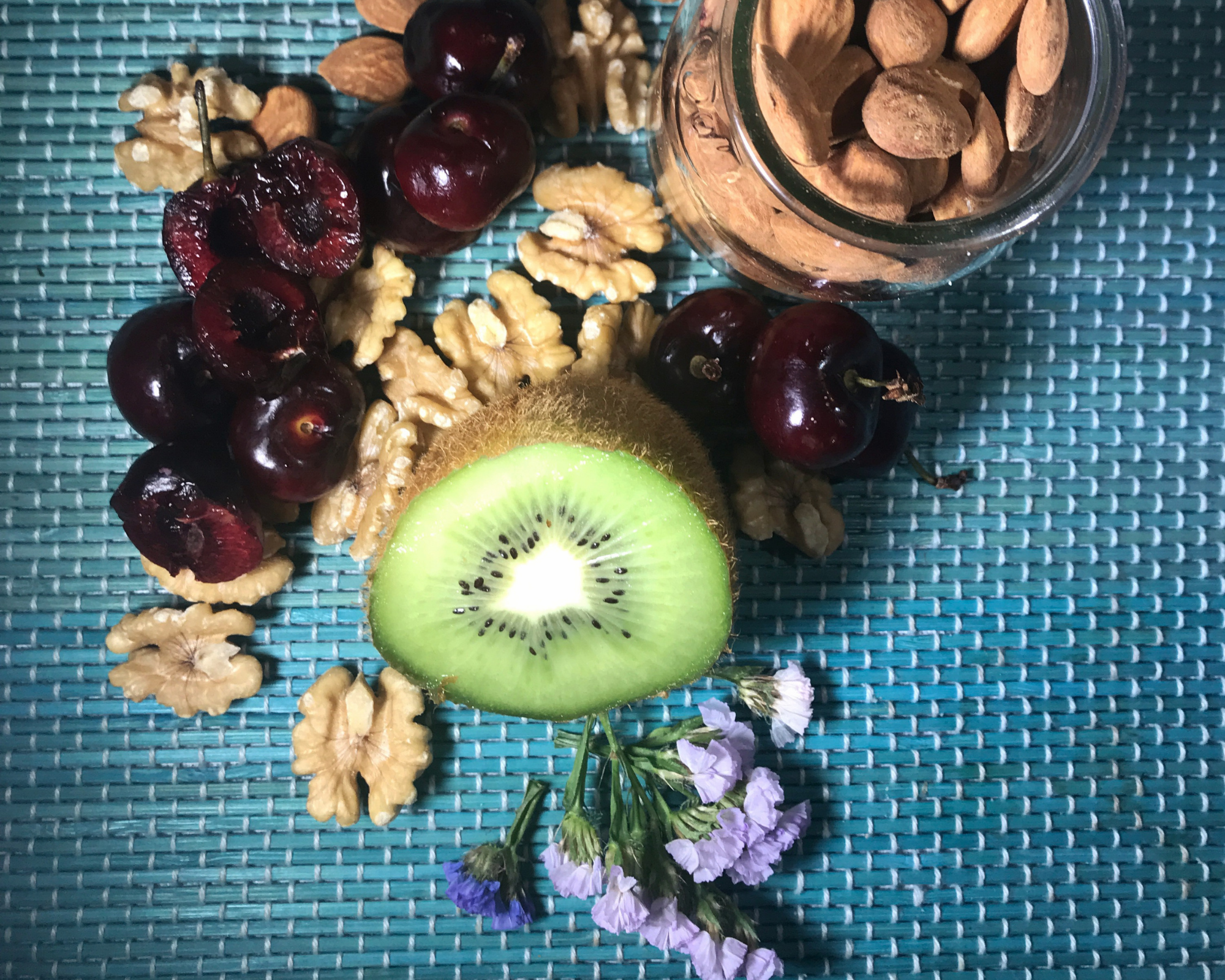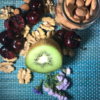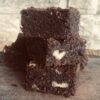 Reading Time: 7 minutes
Reading Time: 7 minutes
By Sarah Bengochea
As I sip my sleep tonic, I’m remembering or perhaps reminiscing of that feeling of lightness, peace, stillness, of joy when you wake up after a fabulous night sleep. The feeling is SO good that I can still remember it. I crave it, I yearn for it like never before. I’m in the throws of being a new mum, well perhaps not so new, I’m 16 months in at this stage and have not had a night where I have slept more than 4 hours.
Never before have I realised the power and importance of proper rest. Never before have I been so tested and pushed to the edge emotionally and physically due to the lack of rejuvenative, soothing sleep.
Sleep & Health
I’ve always known the importance of sleep at a scientific health level. For example, our immune system is active at night repairing and healing our body. Muscle repair happens while we sleep, detoxification happens while we sleep. Sleep literally clears the mind as toxins are gently removed from the brain as we sleep. Melatonin is released as we sleep not only helping us gain restful sleep but also supporting a healthy weight as it interacts with our metabolism at night. New information is processed and stored as memories and our emotions are regulated.
Quality sleep helps us feel energised, balances our mood and helps us maintain a healthy weight.
But at a feeling and functioning level I’d admittedly say I’ve not given it much thought (until now) as I’ve always slept well, or drastically better than I do now. I can hear all the mum’s and dad’s out there who are reading this saying “welcome to the club”. Thank you for the welcome, I am here and in it with you – gosh. Hat’s off, aren’t we an incredible species, the fact that we still function at a basic biological level I’m impressed, let alone that we still run our households, perhaps hold down jobs, plus maintain friendships and families – this is next level stuff, I was naive, I really had no idea.
I’m still unsure of how I’ve got through it and still get through it on a daily basis. However, I recognise that I’m in a very fortunate position, being the co-founder of Weight In Mind and working alongside Faye Hall, I have access to the latest health and nutrition knowledge. Combine that with my passion for food and the role it plays in who we are as humans, how we feel, and our overall health experience I can dial up and dial down different health strategies to help me either “ride the wave” of what’s happening, or do my best to positively influence “the wave” so that I can work with it and to my health advantage.
Ultimately what I’m talking about is feeling good, feeling healthy, feeling like I can live each day in the way that I want to, doing my tasks, activities in a way that feels good.
So while I know my daughter doesn’t sleep through the night, what I try to do is positively influence my ability to fall asleep and sleep well (when I actually can sleep).
There are many ways to influence sleep. It’s one of the main topics that we teach as part of our Weight Loss & Health Gains course. However, sleep is one part of a much bigger and important area of health known as Circadian Rhythm. Whilst it’s essential to get a good night’s sleep, what’s perhaps even more essential is knowing your circadian rhythm and learning how to work with it in a way that promotes your health. This rhythm and its associated hormones such as melatonin and cortisol influence almost everybody’s system and function.
This natural rhythm is so important that disturbances to it such as lack of sleep or too much sleep, eating frequency, disrupted eating times, exercising at the wrong time or not getting enough physical activity, blue light exposure and lack of outdoor living are all factors that have an impact on health. Did you know that disrupted rhythm is one of the biggest triggers for chronic disease and every gene and every organ has a clock?
Since circadian rhythm is so easily influenced with behavioural and physical changes we can easily learn how to manage and master our rhythm for health.
The Food-Sleep Connection
Being the chef here, in today’s post I wanted to talk to you about the foods for sleep specifically and how you can use it to your advantage. Overall diet, in general, is important, eating like a healthy human is the starting block of health, and timing of eating is crucial to quality sleep nutrition. Eating well, eating nutrient dense natural foods paves the way for good sleep.
There are some foods that may specifically help promote a good night sleep as they have been shown to support the production of melatonin in the body.
Melatonin & Sleep
Melatonin is a hormone produced by the pineal gland at night and has long been associated with the signalling of our awake and sleep times. It’s also an incredibly powerful antioxidant and as mentioned also an important component for maintaining a healthy weight. Quite clever really!
As with most things in the body, melatonin production can be influenced, swayed and manipulated – which is always a good sign as it means WE have the power to influence it and use it to our advantage. Light particularly has been shown in studies to be the most influential factor, however, for melatonin to be synthesised by the body, it’s dependent upon a few things, one of those is the availability of its precursor tryptophan, which is an essential amino acid, therefore an essential component of our diet. In addition to tryptophan, there are minerals associated with sleep such as calcium and magnesium, magnesium for example is a relaxant that may help us to get a restful night’s sleep.
Foods For Sleep
When it comes to food and wanting to promote a quality night’s sleep we can choose to combine certain foods in certain ways a couple of hours before going to bed. Because different foods do different things (provide us with melatonin, support the production of melatonin, help us to relax and rest, etc) it can be complex to know what exactly to eat in order to set you up for success in the sleep department.
Here is a food for sleep table to help you choose some sleep promoting foods to add to your diet:
| Melatonin Rich Foods | Tryptophan Rich Foods (supports the production of melatonin) | Magnesium Rich Foods (supports rest and relaxation) | Calcium Rich Foods (supports the production of melatonin from tryptophan) |
| Fruits: Tart cherries, Tomatoes, Olives, Grapes, Pomegranates Vegetables: Broccoli, Asparagus Nuts & Seeds: Walnuts, Flaxseeds, Mustard seeds, Pistachio nuts | Poultry: Turkey, chicken Seafood & Fish: Shrimp, salmon, halibut, tuna, Dairy: Natural live yoghurt, cheese Nuts & Seeds: flax, sesame, pumpkin, sunflower, cashews, peanuts, almonds, walnuts Fruits & Veg: Kiwis, asparagus, broccoli | Nuts & Seeds: almonds, hemp, sunflower seeds, brazil nuts, cashews, pine nuts, flaxseed, pecans, cacao Vegetables: Swiss chard, Kale, Collard greens, Fruits: Avocado, Banana, Dried figs, Guava, Kiwi, Papaya Fish: Tuna, Mackerel, pollock | Vegetables: Spinach, Collard greens, Kale, Dairy: Yoghurt, parmesan, Fish: Trout, Salmon, Pike |
FOOD FOR SLEEP – SLEEPY TONICS
So using what we know about sleep, bodily systems, nutrition and food, we’ve created a few nutrient-dense, healthy recipes that may just help induce a good night’s sleep!
Top Tip – You’ll notice most of our food for sleep recipes are on the sweeter side, that’s because eating something sweeter alongside protein-rich foods can assist with the absorption of the amino acid tryptophan.
CHERRY ALMOND MILK (Hot or Cold)
Serves 1
Calming, soothing, slumber-inducing sleepy tonic, try this delicious drink a couple of hours before going to bed, the zzz should be primed and ready to… sleep.
- 250ml Almond milk
- 30ml tart cherry juice
- 3 tsp raw honey
- 50ml natural yoghurt
- Pomegranate seeds (optional)
Cold Version:
- In a blender, mix the almond milk, tart cherry juice, honey and yoghurt. Taste, and adjust the sweetness to your liking.
- Serve in a tall glass and sprinkle with pomegranate seeds.
Hot Version:
- Add the almond milk and honey to a pan, gently warm through without boiling.
- Remove from the heat, add the cherry juice, combine and serve in your favourite cup.
SPICED CACAO LASSI
Serves 1
If you’re feeling a little stressed or finding it difficult to rest and relax in the evening, try this spiced cacao lassi to help induce a sense of calm. Particularly good for after dinner if craving something sweet too, this is a friendly hug in a mug.
- 200ml (1 cup) almond milk
- 50ml natural yoghurt
- 1 tbsp raw cacao powder
- 20ml tart cherry juice
- Pinch of cinnamon
- Pinch of cardamom powder
- Pinch of nutmeg
- Pinch of ginger
- 1-2 tsp raw honey
- Add everything to the blender, and blend until smooth and creamy. Start off with 1 teaspoon of honey, if you’d like it a little sweeter add another.
FOOD FOR SLEEP – SLEEPY BOWLS
BEAUTY BOWL
Serves 1
Beauty sleep in a bowl. A nutrient dense sleep aid that is also a great pud!
- 120ml natural yoghurt
- 2tbsp chia seeds
- 20ml tart cherry juice
- Handful of fresh or frozen cherries or mixed forest fruits (strawberries, raspberries, blueberries)
- ½ kiwi, skinned & chopped
- Small handful of almonds, walnuts & pistachios chopped
- Combine the yoghurt and chia seeds, leave for five minutes allowing the chia seeds to swell and further thicken the yoghurt.
- Add the fruit, the chopped nuts and drizzle over the cherry juice and enjoy.
Sleep From A Whole Health Perspective
A good night’s sleep is just one component of health and there is no exact prescription that will work for everyone. Our individual health is reliant upon and influenced by many factors such as:
- MIND: Perception, thoughts, feelings, emotions, beliefs, knowledge, values, behaviours
- BODY: Detoxification, digestion, metabolism, circadian rhythm, gut-brain axis, immune function, cardiovascular function, etc
- ENVIRONMENT: Cookery skills, exercise, relationships, social circles, work habits, the physical location of work, or life, connection to nature
These three areas (MIND, BODY, ENVIRONMENT) overlap and interlink, they are essentially one system influencing one another, all of the time. For example, one small change in the kitchen and improving the diet (ENVIRONMENT) may lead to a small change in your ability to sleep (BODY), which may lead to small changes in how you feel (MIND), and vice versa.
While the model of health is the same for everyone in the sense we all have mind, body and environmental elements going on, what’s going on for you under each area, will be different from what’s going on for me when it comes to sleep or health in general.
What we do at Weight In Mind is help people identify where the best intervention is going to be using the mind, body, environment model, from there individuals can learn to dial up or dial down things in support of their health goals, or in today’s example sleep!







